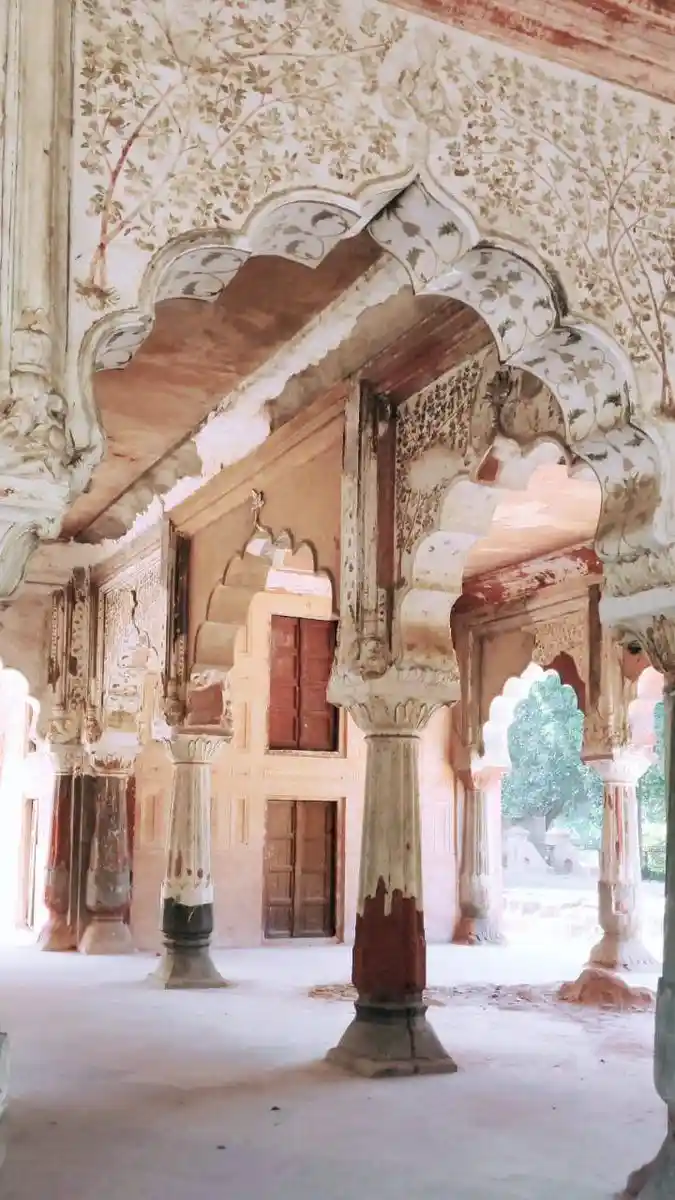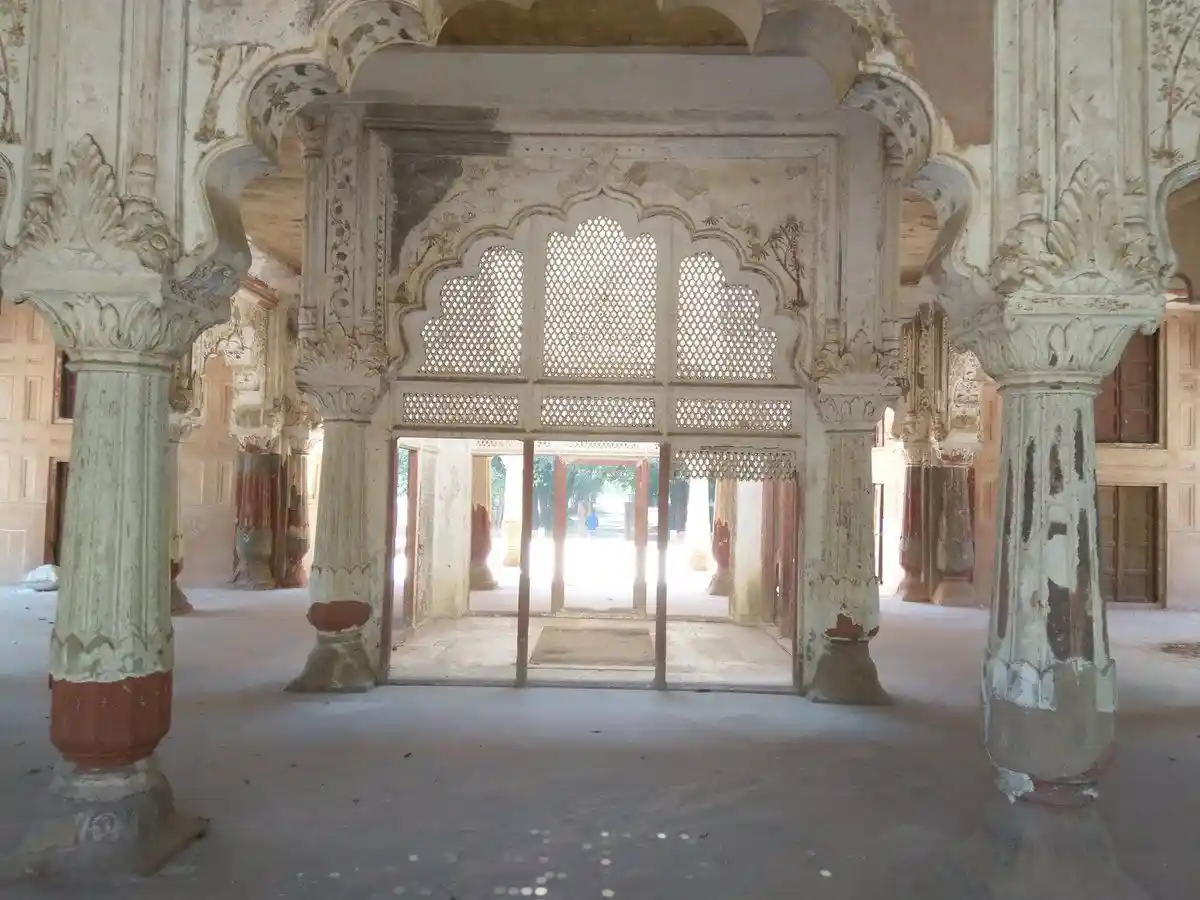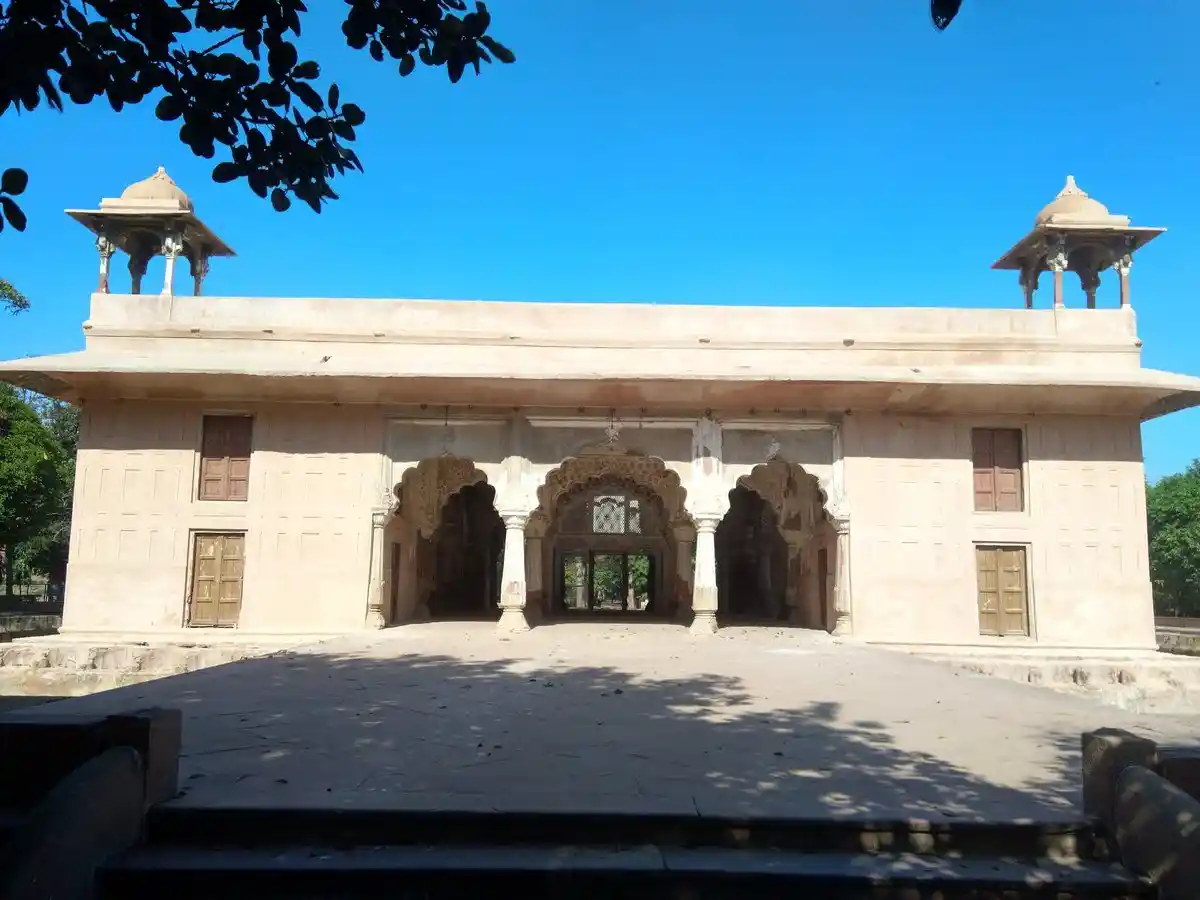Roshanara Bagh
It is ironic that Roshanara Bagh though built at the same time period that many consider as the “Golden Period of Mughal Architecture” is hardly being discussed whenever this period is mentioned. It is one of the very few structures built under the guidance of a women during that period.

Roshanara Begum; Image Source - wikipedia
Roshanara Begum was the daughter of the Mughal Emperor Shah Jahan and his wife Mumtaz Mahal. She was a brilliant woman and a powerful political figure who chose to support her brother Aurangzeb during his war of succession against their father’s chosen heir Dara Shikoh. It is said, Roshanara had been the mastermind behind Aurangzeb’s accession and even went to the extent of spying regularly on Dara Shikoh.
And her plan did succeed and she was later bestowed with the title of “Padshah Begum” and became the First Lady of the Mughal Empire. She was a gifted poet and exercised a tremendous deal of power in the royal harem.
Today, she is best known for the building of her garden Roshanara Bagh in Delhi where her tomb lies in the centre. It is situated in Shakti Nagar near Delhi University North Campus. It is one of the biggest gardens in Delhi, with a wide range of flora, including some imported from Japan. During the winter, migratory birds flock to the gardens' lake, making it a popular destination for bird watchers.
One of the most striking features of the site is that it is much more than a historical depiction of the realities of the Mughal period. It is true that such an intricately designed garden is a representation of cultural sophistication, economic wealth, political stability, and so on, but it must be acknowledged that it also reflects something far more serious.
Roshanara Garden is much more than a Mughal symbol of their absolute authority; it is with this structure that we witness a woman gaining economic independence and having the freedom to do anything she wants with it without having it sanctioned by a male member of her family every time.
Roshanara Bagh is constructed in the traditional way, using the Heavenly Concept of Char-Bagh, in which the Tomb or residential complex would be built in the centre of the garden. The central building was surrounded by four beautifully crafted square pieces of gardens, each with four well-made water channels through which water came rushing and fountains displaying impenetrable splendour. The garden is believed to be laid out in a design similar to that of Paradise (Jannat). The same layout used by Shah Jahan while building the Taj Mahal.
It was this Bagh and the Baradari (named so because of the twelve arches in the structure) located at its centre that became her place of stay when she had a fallout with her Brother Aurangzeb and chose to have this as her residential complex. Her palace, located in the middle of the Roshanara garden, serves as a reminder of the significant role she played in Indian history. She died at the age of 54, and the Bagh became her final resting place where she was buried.
With the passage of time, only two buildings have survived. - a central pavilion or baradari and an entrance gate. The original char bagh layout of the garden was destroyed by the British while converting it into an English garden and the pavilion that once stood is no more intact. Because of its location among the dense forest, the area was used as a "summer getaway" during the colonial era.
On August 15, 1922, the Roshanara Club was established here by the British, bureaucrats and the emerging India elites. The area covered by the club is approximately 22 acres. The club is regarded as the birthplace of the Board of Control for Cricket in India (BCCI), though it was formally registered as an entity only in 1928. The club also holds grand parties and receptions and to be a member of the club is of high prestige.
Roshanara Bagh since its construction has been a place for leisure and relaxation and continues to be so even today. Old and young alike visit the park for a stroll or simple to sit back and relax in the midst of the hustle and bustle of of the city. It has also become a place for exercise enthusiasts and joggers who run in the narrow aisle carved out with stones in between the garden and enjoy the fresh and tranquil mornings.

Inside view of Roshanara Bagh

Tomb of Roshanara Begum

Inside view of Roshanara Bagh


